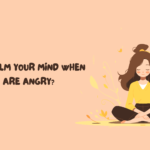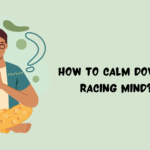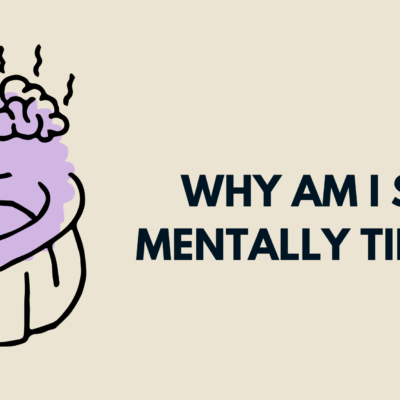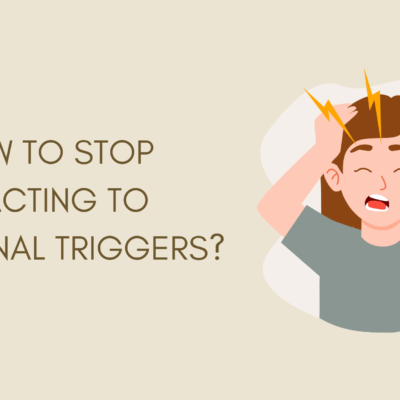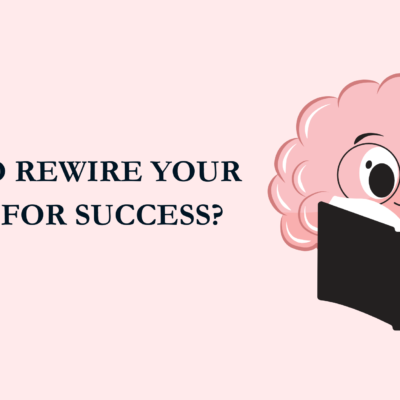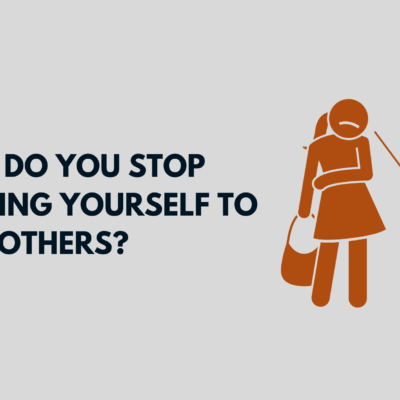How to Calm Subconscious Anxiety: Anxiety is not always loud. Sometimes, it doesn’t come as a panic attack or a racing heart. Instead, it lingers in the background—like a low hum of worry, unease, or tension that you can’t quite name. This is subconscious anxiety, and it’s more common than we realize.
You may feel restless without knowing why. You might overthink things, feel uneasy even during good moments, or carry a constant fear of “something going wrong.” The challenge with subconscious anxiety is that it hides under the surface and operates silently, influencing your thoughts, behaviors, and overall well-being.
In this article, we’ll explore what subconscious anxiety is, how it manifests, and most importantly—how to calm it using evidence-based, practical tools and long-term healing strategies.
Also Read:
What Is Subconscious Anxiety?
Subconscious anxiety refers to worry or fear that operates below the level of conscious awareness. It often shows up not as obvious panic or stress, but as:
- Chronic muscle tension
- Procrastination
- Trouble sleeping
- Racing thoughts or intrusive worries
- Digestive issues
- Overthinking
- Feeling emotionally “numb” or disconnected
You might not even recognize you’re anxious until it shows up in your body, mood, or choices.
Why Does Subconscious Anxiety Happen?
There are several reasons:
- Childhood experiences: Growing up in unpredictable or emotionally distant environments
- Unresolved trauma: From breakups, losses, failures, or painful events
- Perfectionism or fear of judgment
- Suppressed emotions: Especially in people who avoid confrontation
- Constant exposure to stress or overstimulation
The subconscious mind stores patterns and emotional memories that shape our responses—often without us realizing it.
1. Develop Body Awareness (Somatic Practice)
Your body knows what your mind tries to ignore. One of the best ways to access and calm subconscious anxiety is through somatic awareness.
Practice: Body Scan Meditation
- Sit or lie down comfortably.
- Close your eyes.
- Slowly bring your attention to each part of your body—from head to toe.
- Notice sensations: tension, tightness, tingling, or emptiness.
- Breathe into the areas that feel heavy or anxious.
By connecting with your body, you begin to bring subconscious tension into conscious awareness—where it can be released.
2. Use the “Name It to Tame It” Method
Subconscious anxiety often feels like vague uneasiness. Naming it reduces its power.
Ask yourself:
- “What am I really feeling right now?”
- “Is this anxiety linked to fear, sadness, guilt, or uncertainty?”
- “What might this anxiety be trying to protect me from?”
When you identify the emotion beneath the surface, you give it a safe space to be felt—rather than suppressed.
3. Engage in Daily Breathwork
Your breath is the bridge between your body and subconscious mind. Controlled breathing calms the nervous system and reprograms the brain’s fear centers.
Practice: 4-7-8 Breathing
- Inhale for 4 seconds
- Hold for 7 seconds
- Exhale slowly for 8 seconds
- Repeat for 4–6 cycles
Do this 1–2 times a day, especially during moments of stillness. It sends a message to your body: You’re safe.
4. Journal Without Filters (Subconscious Dumping)
Sometimes subconscious anxiety is just thoughts and feelings that haven’t found a voice.
Try this:
- Set a timer for 10–15 minutes.
- Write whatever comes to mind—no filter, no judgment.
- Don’t worry about grammar or structure.
This stream-of-consciousness writing brings hidden fears, worries, and limiting beliefs to the surface—so they can be released.
You might discover thoughts like:
- “I don’t feel good enough.”
- “What if I lose everything?”
- “I’m scared of disappointing people.”
Once they’re on paper, they lose their grip.
5. Rewire Through Affirmations + Visualization
Your subconscious mind is shaped by repetition and emotion. The more you affirm peace, the more your subconscious adopts it as truth.
Affirmations to try:
- “I am safe in this moment.”
- “It’s okay to rest.”
- “I trust myself to handle whatever comes.”
- “My mind and body know how to heal.”
Pair affirmations with visualization:
- Picture yourself calm, grounded, and peaceful.
- Imagine walking through a quiet forest, lying on a warm beach, or feeling completely at ease.
- Feel the safety in your body as you visualize.
With regular practice, your subconscious begins to believe it.
6. Practice “Mindful Presence”
Subconscious anxiety thrives when your mind is stuck in the past or worried about the future. Mindfulness brings you back to now.
Ways to practice:
- Focus entirely on one activity: brushing your teeth, sipping tea, or walking.
- Notice the colors, textures, sounds, and smells.
- When thoughts drift, gently return to the present.
Even 5 minutes of mindful attention can shift your brain from chaos to calm.
7. Heal Through Movement
Subconscious anxiety can be stored physically—especially in the hips, shoulders, and gut. Movement helps process and release these hidden tensions.
Try:
- Gentle yoga or tai chi
- Stretching while focusing on breath
- Ecstatic dance or intuitive movement
- Walking in nature without distractions
This reconnects you with your body and allows trapped energy to flow again.
8. Limit Subconscious Triggers (Digital Detox)
Subconscious anxiety is often fueled by what you consume—without realizing it.
Do an audit:
- How do you feel after scrolling social media?
- Do news updates make you feel unsafe or overwhelmed?
- Are you consuming content that constantly stimulates fear or comparison?
Protect your peace by curating your environment. Follow calming, uplifting content. Take digital breaks. Choose silence when needed.
9. Address Suppressed Emotions
Subconscious anxiety can be the result of unfelt sadness, anger, or grief. Instead of pushing these feelings down, give them room.
Try this practice:
- Sit quietly and ask, “What does my body want to feel right now?”
- Don’t force anything—just listen.
- If tears come, let them.
- If anger arises, express it in a healthy way—punch a pillow, write a letter you don’t send, or scream into a cushion.
Emotions are messengers. When they’re heard, they don’t need to shout anymore.
10. Prioritize Deep Rest
Subconscious anxiety often comes from nervous system fatigue. When your body is always “on,” it never gets a chance to reset.
Tips to promote deep rest:
- Sleep 7–9 hours consistently
- Avoid screens at least an hour before bed
- Try calming nighttime rituals—lavender oil, soft music, warm tea
- Use Yoga Nidra or guided sleep meditations
Rest is not a luxury—it’s essential for healing subconscious stress.
11. Inner Child Healing
Many subconscious fears were formed in childhood—when you felt scared, unheard, or unloved.
Steps for inner child healing:
- Find a quiet space
- Close your eyes and imagine your younger self
- Ask: “What do you need right now?”
- Offer reassurance: “I’m here now. You’re safe. You are loved.”
Speak to your inner child with kindness and patience. Re-parenting yourself builds inner security.
12. Seek Gentle Therapy or Energy Work
If subconscious anxiety is persistent or linked to past trauma, you don’t have to face it alone.
Support options:
- Cognitive Behavioral Therapy (CBT)
- Somatic Experiencing
- EMDR (Eye Movement Desensitization and Reprocessing)
- Reiki, breathwork therapy, or trauma-informed coaching
These modalities gently guide you into the subconscious mind and support healing at the root.
13. Build a Life That Feels Safe
You can’t calm the subconscious if your external world is always triggering.
Create micro-environments of safety:
- Declutter your space
- Set boundaries with people who drain you
- Keep calming items nearby (essential oils, books, cozy blankets)
- Say “no” to what overwhelms you—even if it’s hard
- Say “yes” to joy, art, quiet, connection, and slowness
When life slows down, the inner world has space to heal.
Conclusion: Healing Is a Gentle Unfolding
Subconscious anxiety doesn’t go away in a day. It softens with awareness, patience, and self-compassion. It’s not about “fixing” yourself—it’s about listening to yourself more deeply than ever before.
So if you’ve been feeling unsettled, unsure, or just “off,” know this:
You are not broken. You’re becoming aware.
And with each breath, each moment of rest, and each step inward—
You’re moving closer to peace.

